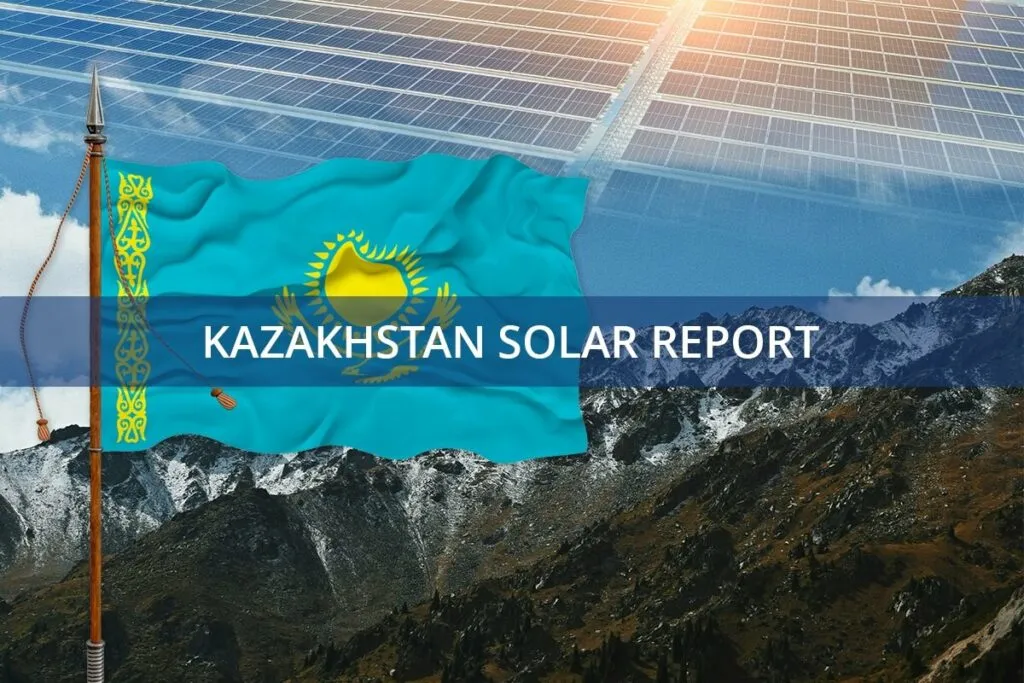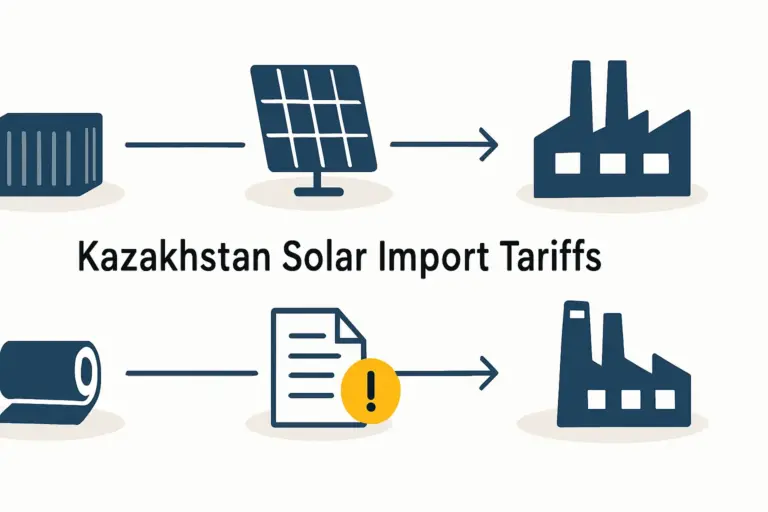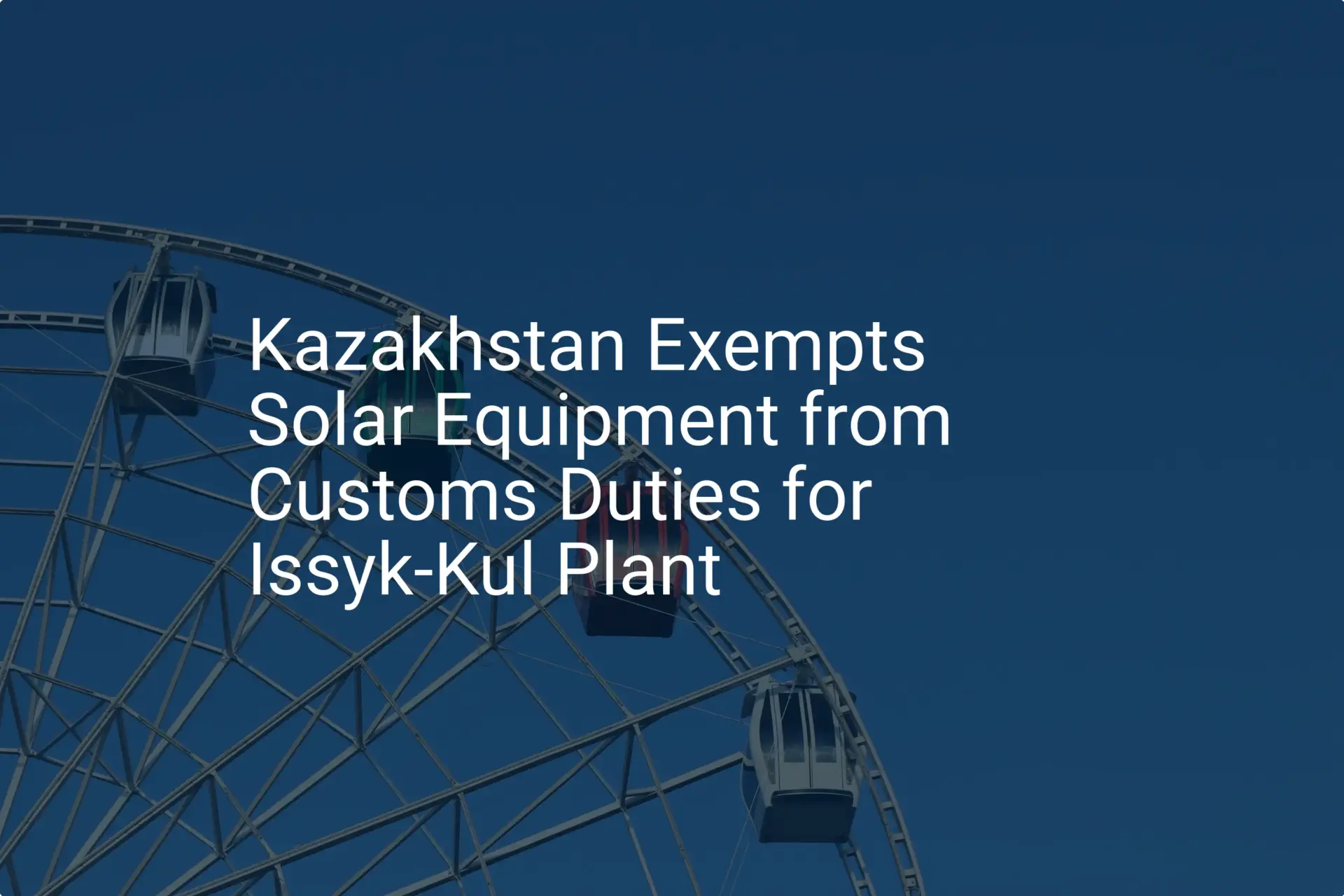Entrepreneurs planning to establish a solar module factory often focus first on technology and finance. Yet, an even earlier decision—the physical location of the facility—can have a more profound and lasting impact on operational efficiency, cost structures, and market access.
In a country as vast and strategically positioned as Kazakhstan, selecting the right city is not merely a logistical choice but a foundational business strategy. This analysis provides a structured comparison of Kazakhstan’s three primary industrial centers: Almaty, Astana, and Shymkent. It evaluates each location through the lens of an international investor, focusing on the factors that directly influence the success of a new manufacturing venture. Understanding these regional nuances is the first step toward building a resilient and profitable operation.
Key Evaluation Criteria for Industrial Site Selection
Before comparing the cities, it’s important to establish the framework for evaluation. For any industrial project, especially in a developing market, four key factors determine a location’s suitability. A comprehensive plan for a factory’s building and layout must account for these external conditions.
-
Infrastructure and Utilities: Reliable access to electricity, water, and digital communications is non-negotiable. The quality of local industrial parks and the availability of serviced land are also critical.
-
Logistics and Market Access: This criterion covers the efficiency of transporting raw materials in and finished goods out. Proximity to rail lines, major highways, international borders, and key consumer markets is paramount.
-
Labor and Talent Pool: The availability of a skilled workforce, from technical operators to management professionals, directly affects productivity and training costs. Local population size and the presence of technical universities are key indicators.
-
Operating Environment and Costs: This category covers the cost of land, labor, and utilities, as well as the local regulatory environment and potential benefits offered by Special Economic Zones (SEZs).
Comparative Analysis of Kazakhstan’s Industrial Hubs
Each of Kazakhstan’s major cities offers a distinct combination of advantages and disadvantages. The optimal choice depends entirely on the specific priorities of the manufacturing business.
Almaty: The Commercial Powerhouse
As the nation’s largest city and former capital, Almaty remains Kazakhstan’s undisputed commercial and financial center. It boasts the country’s most developed service economy and its largest consumer market.
Strengths:
Ready to make big Profits?
The solar Industry is Booming
WE HELP NEWCOMERS to the solar industry start their own solar module production line. Customers can make BIG PROFITS by selling modules and finding investors, without wasting money and time on things they don't need!
- Talent Access: Home to the country’s top universities, providing a deep pool of managerial, financial, and technical talent.
- Market Proximity: The largest concentration of wealth and population offers a robust local market for finished goods.
- Established Services: A mature ecosystem of financial institutions, logistics companies, and professional service providers simplifies business operations.
Challenges:
- Higher Costs: Industrial land and labor costs are the highest in the country.
- Logistical Constraints: The city’s location in the mountainous southeast can create transportation bottlenecks, particularly for east-west rail and road freight.
- Congestion: Significant traffic and urban density can slow down local logistics and employee commutes.
Best Suited For: Businesses that prioritize access to a large domestic market, a highly skilled white-collar workforce, and a sophisticated financial sector. The total investment required will likely be higher here due to real estate and labor expenses.

Astana (Nur-Sultan): The Administrative Capital
The purpose-built capital, Astana, is a hub of modern infrastructure, government administration, and ambitious development projects. It offers a clean, organized environment for businesses that benefit from proximity to national policymakers.
Strengths:
- Government Proximity: Direct access to ministries and state agencies can streamline permitting and regulatory processes.
- Modern Infrastructure: The city features well-planned road networks and the “Astana-New City” Special Economic Zone, which offers tax and customs incentives.
- Central Location: Positioned in the country’s center, it offers a balanced logistical starting point for distribution across Kazakhstan.
Challenges:
- Harsh Climate: Extremely cold winters can increase heating and construction costs and may affect year-round logistical operations.
- Developing Industrial Base: While growing, its industrial ecosystem is less mature than that of Almaty or Shymkent.
- Labor Market: The talent pool for specialized manufacturing roles is smaller and more competitive than in the other two cities.
Best Suited For: Companies engaged in state-sponsored projects, high-tech manufacturing, or industries where close coordination with government bodies is a strategic advantage.

Shymkent: The Southern Industrial Heartland
Located in the densely populated south, Shymkent is Kazakhstan’s traditional industrial engine. It benefits from a favorable climate, a large labor force, and strategic proximity to the burgeoning markets of Central Asia.
Strengths:
- Labor Availability: A large, young population and a long industrial history provide a ready supply of skilled and semi-skilled labor at competitive wages.
- Strategic Location: Its proximity to Uzbekistan and Kyrgyzstan makes it an ideal hub for exporting to neighboring Central Asian countries.
- Lower Operating Costs: Land, labor, and general operational expenses are significantly lower than in Almaty or Astana. The “Ontustik” SEZ focuses on industrial production.
Challenges:
- Distance from Major Markets: The city is geographically distant from the key consumer markets in Russia and the more affluent population centers of northern Kazakhstan.
- Developing Service Sector: Its professional services ecosystem, while growing, is less developed than Almaty’s.
Best Suited For: Labor-intensive manufacturing operations, particularly those targeting export markets in Central Asia. It is an excellent choice for a cost-sensitive solar module manufacturing business.

Data-Driven Decision Making: A Summary Table
To clarify these differences, the following table summarizes key metrics for each city. These figures are illustrative and intended for comparative purposes.
Criterion: Population (Metro Area)
Almaty: ~2.2 Million
Astana: ~1.4 Million
Shymkent: ~1.2 Million
Criterion: Avg. Industrial Labor Wage
Almaty: Highest
Astana: High
Shymkent: Moderate
Criterion: Proximity to Key Market
Almaty: Large Domestic Market
Astana: Government/North KZ
Shymkent: Central Asia (Export)
Criterion: Logistics Connectivity
Almaty: Good (but congested)
Astana: Very Good (Central Hub)
Shymkent: Excellent (Regional Hub)
Criterion: Key SEZ Focus
Almaty: Logistics & Tech
Astana: Mixed Industrial/Admin
Shymkent: Light & Heavy Industry
Criterion: Climate Factor
Almaty: Moderate
Astana: Severe Winter
Shymkent: Mild Winter/Hot Summer
Final Considerations for International Investors
Based on experience from J.v.G. turnkey projects, international investors should also weigh qualitative factors. For instance, the Belt and Road Initiative has significantly upgraded Kazakhstan’s rail infrastructure, making east-west transit more viable than ever. A site near a major rail junction, such as those in Astana or Shymkent, can be a major competitive advantage for exporting to Europe or China.
The choice of city also directly influences project timelines and setup complexity. A location with a well-established industrial park and a straightforward permitting process can reduce time-to-market by several months. Each city presents a unique trade-off between cost, market access, and operational ease. The “best” location is not universal; it is the one that best aligns with a company’s specific business model and strategic goals.
Frequently Asked Questions (FAQ)
Q: Which city is best for a factory exporting to China?
A: While all have rail access, Almaty’s proximity to the Khorgos Gateway dry port on the Chinese border gives it a distinct logistical advantage for exports to the east.
Q: How much does the local climate affect solar factory operating costs?
A: The impact is significant. Astana’s severe winters require higher investment in building insulation and consistent, costly heating. Shymkent’s hot summers may demand more energy for cooling during peak production months. This should be factored into the operational expenditure model.
Q: Where can one find the most experienced manufacturing labor?
A: Shymkent, with its long industrial history, generally has the most accessible pool of experienced blue-collar workers and technicians. Almaty has a larger pool of engineers and management professionals.
Q: Does the Kazakh government offer specific incentives for solar manufacturing?
A: The government offers broad incentives for manufacturing investors, primarily through its Special Economic Zones (SEZs). These typically include exemptions from corporate income tax, land tax, property tax, and customs duties for a set period. The benefits are available to various industries, including renewables.
Q: Is it necessary to have a local partner?
A: While not legally mandatory for many forms of investment, having a reliable local partner can be invaluable for navigating administrative procedures, understanding local business culture, and managing relationships. For a complex undertaking like setting up a factory, it is highly advisable.






